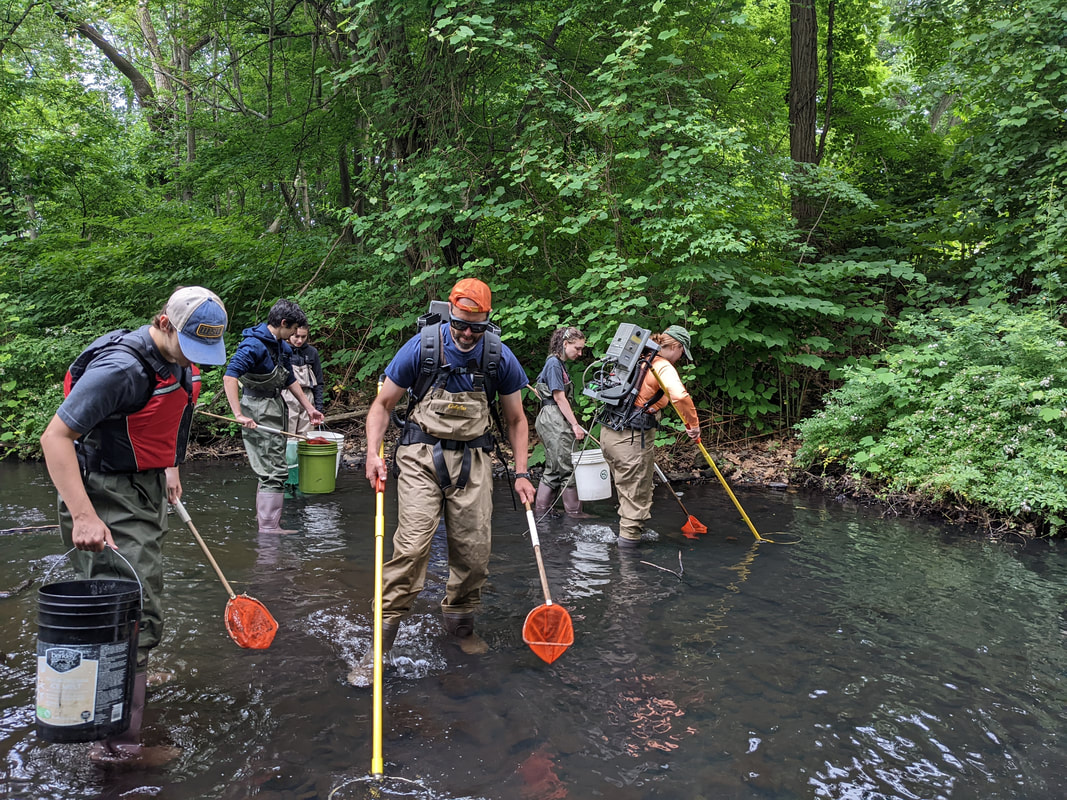Research Overview
I am an evolutionary ecologist broadly interested in the natural history, ecology and evolution of freshwater fishes. My research is strongly field-oriented, and focuses on lacustrine fish assemblages in East Africa and Central America – both global hotspots of vertebrate diversity. I am interested in understanding how both natural (predation, competition) and anthropogenic (invasions, fishing, impoundment) drivers interact to influence organisms’ functional traits and ecological niches, and how such changes may scale up to influence community and food web structure in aquatic systems. Overall, my research seeks to advance our basic understanding of the evolutionary ecology of fishes while also informing efforts to conserve threatened species and sustainably manage inland fisheries for the welfare of local communities that depend on them.
My current research focuses on the following themes:
My current research focuses on the following themes:
Ecological and evolutionary consequences of predation in freshwater systems
Predation is an important biotic interaction that can have influence at multiple levels of biological organization. At the organismal level, I am interested in understanding how predation can shape fish morphology (e.g., body shape, Sharpe et al. 2015, Geladi et al. 2019), behaviour (e.g., shoaling, habitat use, Sharpe et al. 2021) and life history strategies (e.g., size at maturation, reproductive investment, Sharpe et al. 2012). At the population and community level, I am interested in understanding how predation can influence the distribution, abundance and diversity of prey species and ultimately shape the size structure and composition of freshwater fish communities (Sharpe et al. 2017). In this line of research, I leverage introductions of novel apex predators (e.g., the introduction of the Nile perch, Lates niloticus, in Lake Victoria, and the introduction of the peacock bass, Cichla monoculus, in Lake Gatun in Panama) and use these as “natural experiments” to study the ecological and evolutionary consequences of predation in the wild.
Trophic ecology and food web structure
A central goal in ecology is to understand the factors that influence organisms’ trophic niches and more broadly, the size and structure of entire food webs. I am interested in understanding how species interactions, particularly competition, influence fishes’ trophic niches (e.g., Sharpe and Chapman 2014). I am also interested in exploring the extent to which contemporary niche shifts may drive changes in trophic morphology (i.e., character displacement, e.g., Sharpe and Chapman 2018).
I am currently using a combination of field surveys, stomach contents analysis and stable isotope analysis to elucidate trophic interactions between multiple introduced and native species in Panama (Valverde et al. 2020, Sharpe et al. In Review). I am particularly interested in how food web structure in Lake Gatun may be impacted by the introduction of multiple piscivores as well as recent incursions of marine species through the recently-expanded Panama Canal.
I am currently using a combination of field surveys, stomach contents analysis and stable isotope analysis to elucidate trophic interactions between multiple introduced and native species in Panama (Valverde et al. 2020, Sharpe et al. In Review). I am particularly interested in how food web structure in Lake Gatun may be impacted by the introduction of multiple piscivores as well as recent incursions of marine species through the recently-expanded Panama Canal.
Life history evolution in harvested populations
Fishing - which drastically alters patterns of age and size-specific mortality - provides an excellent opportunity to empirically test specific predictions of life history theory in natural systems. My research focuses on understanding patterns of contemporary life history change in harvested fish populations (Sharpe and Hendry 2009), with an emphasis on under-studied tropical inland fisheries (Chapman and Sharpe 2014). I am particularly interested in Rastrinebola argentea – a small cyprinid that is endemic to the Lake Victoria Basin and is now the most important commercial fish stock (by mass) in the basin, and is thus key to regional food security. We have previously found that the onset of commercial fishing in Lake Victoria in the 1990s coincided with rapid and substantial life history changes in R. argentea, including increased reproductive investment and maturation at smaller body sizes (Sharpe et al. 2012). The fishery for R. argentea has been rapidly expanding over the past two decades, and new fisheries have opened on smaller lakes – representing a unique opportunity to examine fisheries-induced life history change during the very early stages of a fishery. I am currently collaborating with Dr. Lauren Chapman (McGill) and Dr. Winnie Nkalubo (National Fisheries Resources Research Institute of Uganda, NaFIRRI) to monitor one of these newly-established fisheries (on Lake Nabugabo, in Uganda). We have initiated a long-term study that combines catch assessments, quantitative field surveys, and trait measurements to explore the demographic and life history consequences of this fishery. We recently found a 98% decline in abundance in R. argentea over the first decade of this fishery (Groves et al. 2021) and we plan to continue to monitor for ongoing changes in abundance and life history traits. Ultimately, we hope to generate data that can be used by our Ugandan collaborators to directly inform the management of this key fishery.
Impacts of urbanization and impoundment on temperate stream assemblages
Land use change, in particular urbanization and impoundment, can have profound impacts on the structure and diversity of stream assemblages. Currently, I am collaborating with Dr. Laura Reynolds (WSU), Dr. Alison Dunn (WSU), Dr. Bill Hansen (WSU) and Dr. Meghna Dilip (WSU) to explore spatial and temporal variation in water quality and freshwater fish and macroinvertebrate community structure along an urbanization gradient in the Tatnuck Brook Watershed in Worcester, Massachusetts. We are also working closely with several external partners, including the City of Worcester, Clark University, Massachusetts Department of Fish and Wildlife, the Tatnuck Brook Watershed Association (TWBA) and the Cook’s Pond Association.








